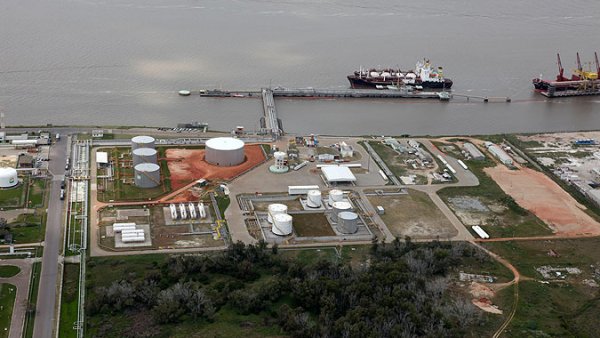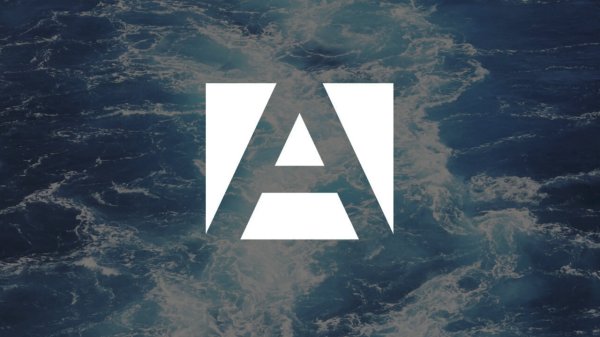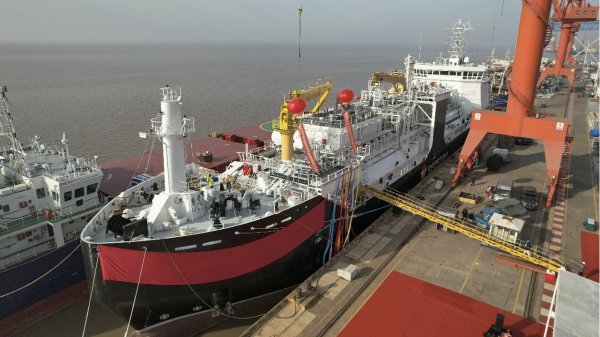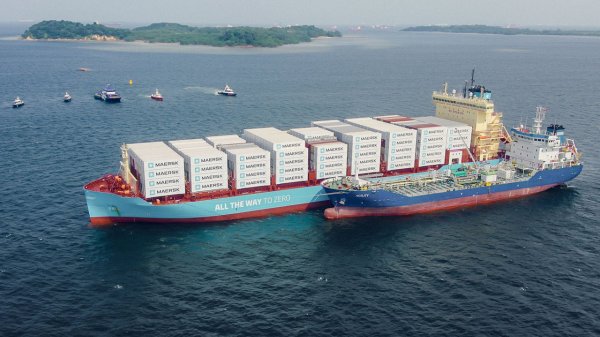LNG-powered container ship granted approval
Vessel is designed with 'a new type of LNG tank' that is said to provide more space for container cargo.
Kawasaki Heavy Industries has completed the development of a large, 9 000 TEU container ship fuelled by LNG and obtained approval in principle from DNV.
According to DNV, the ship has been designed with 'a new type of LNG tank' that provides more space for container cargo.
The LNG is stored in prismatic low pressure insulated tanks (Type B). DNV says it is the first time that such tanks have been proposed for a large container ship. They are different from cylindrical pressure tanks (Type C) and are said to utilize the available space much better due to their prismatic, rectangular shape. KHI has also adopted a unique technology, the Kawasaki Panel System, for heat insulation in order to reduce the rate of evaporation of LNG.
B-type tanks produce evaporating LNG continuously, which must be used for propulsion or auxiliaries. Reefer containers will consume the boil off in port, thus eliminating any emission of LNG to air as well as eliminating the need for cold ironing.
KHI obtained DNV approval in principle for both the gas supply system of the vessel and the LNG fuel tanks. KHI now plans to perform a safety assessment of the vessel with DNV.
The LNG fuel tank and diesel oil tanks are located under the forward superstructure, thus minimising the loss of cargo space. The design criteria for ships using LNG as fuel are currently being studied by IMO. The location of LNG tanks under the accommodation has been a subject for discussion in the industry. DNV has been playing an active role in these discussions.
"It is important to understand the environmental imperatives that shipowners face, but it is also important to recognise that, in reality, the uptake of new technologies is a balance between risk and business need. Together, DNV and KHI have struck just the right balance with this vessel," said Tor Svensen, COO at DNV.
There are high expectations for LNG as an alternative, next-generation clean fuel to reduce reliance on heavy fuel oil which is currently used for large container ships. LNG was chosen as the fuel for the vessel because it reduces carbon dioxide (CO2) emissions and dramatically reduces nitrogen oxides (NOx) and sulphur oxides (SOx).
DNV is also promoting LNG as it is proving to be an economically favourable emissions reduction solution for shipowners. Decoupled from oil prices due to sources such as shale gas, it is expected to remain competitive for the lifetime of new vessels entering the market. 25 ships in Norway are already floating evidence of LNG’s safety and technical feasibility, and DNV has had rules in place for over 10 years.
The new container ship design features:
(1) A twin island design maximising cargo space available for loading containers.
(2) A two stroke dual-fuel main engine which is electronically controlled with a high combustion efficiency coupled with a hull form optimised for safety and fuel efficiency.
(3) The engine may be equipped with an exhaust gas recirculation system (EGR) which satisfies IMO Tier-3 requirements for voyages in North American and European Emission Control Areas (ECAs).
KHI will apply the technology and design principles used to other container ships as part of the company’s goal to be world leaders in the development and construction of innovative eco-friendly vessels. With KHI technologies acquired through the past development and construction of LNG carriers, KHI also plans to move into the field of LNG bunkering vessels to further extend the scope of their environmental offerings.
DNV has worked on the feasibility of a range of large LNG fuelled ships through concept studies such as the container ship Quantum 9000, Triality, a VLCC size oil tanker, and two different sized bulk carriers. "DNV is proud to be working with forward-thinking companies such as KHI to help make clean shipping a reality," said Svensen.
Principal particulars of the new 9,000 TEU LNG-fuelled container vessel have been provided below.
Length overall 308 m
Breadth 48.4 m
Draught 14.5 m
LNG fuel tank 7,000 m3
According to DNV, the ship has been designed with 'a new type of LNG tank' that provides more space for container cargo.
The LNG is stored in prismatic low pressure insulated tanks (Type B). DNV says it is the first time that such tanks have been proposed for a large container ship. They are different from cylindrical pressure tanks (Type C) and are said to utilize the available space much better due to their prismatic, rectangular shape. KHI has also adopted a unique technology, the Kawasaki Panel System, for heat insulation in order to reduce the rate of evaporation of LNG.
B-type tanks produce evaporating LNG continuously, which must be used for propulsion or auxiliaries. Reefer containers will consume the boil off in port, thus eliminating any emission of LNG to air as well as eliminating the need for cold ironing.
KHI obtained DNV approval in principle for both the gas supply system of the vessel and the LNG fuel tanks. KHI now plans to perform a safety assessment of the vessel with DNV.
The LNG fuel tank and diesel oil tanks are located under the forward superstructure, thus minimising the loss of cargo space. The design criteria for ships using LNG as fuel are currently being studied by IMO. The location of LNG tanks under the accommodation has been a subject for discussion in the industry. DNV has been playing an active role in these discussions.
"It is important to understand the environmental imperatives that shipowners face, but it is also important to recognise that, in reality, the uptake of new technologies is a balance between risk and business need. Together, DNV and KHI have struck just the right balance with this vessel," said Tor Svensen, COO at DNV.
There are high expectations for LNG as an alternative, next-generation clean fuel to reduce reliance on heavy fuel oil which is currently used for large container ships. LNG was chosen as the fuel for the vessel because it reduces carbon dioxide (CO2) emissions and dramatically reduces nitrogen oxides (NOx) and sulphur oxides (SOx).
DNV is also promoting LNG as it is proving to be an economically favourable emissions reduction solution for shipowners. Decoupled from oil prices due to sources such as shale gas, it is expected to remain competitive for the lifetime of new vessels entering the market. 25 ships in Norway are already floating evidence of LNG’s safety and technical feasibility, and DNV has had rules in place for over 10 years.
The new container ship design features:
(1) A twin island design maximising cargo space available for loading containers.
(2) A two stroke dual-fuel main engine which is electronically controlled with a high combustion efficiency coupled with a hull form optimised for safety and fuel efficiency.
(3) The engine may be equipped with an exhaust gas recirculation system (EGR) which satisfies IMO Tier-3 requirements for voyages in North American and European Emission Control Areas (ECAs).
KHI will apply the technology and design principles used to other container ships as part of the company’s goal to be world leaders in the development and construction of innovative eco-friendly vessels. With KHI technologies acquired through the past development and construction of LNG carriers, KHI also plans to move into the field of LNG bunkering vessels to further extend the scope of their environmental offerings.
DNV has worked on the feasibility of a range of large LNG fuelled ships through concept studies such as the container ship Quantum 9000, Triality, a VLCC size oil tanker, and two different sized bulk carriers. "DNV is proud to be working with forward-thinking companies such as KHI to help make clean shipping a reality," said Svensen.
Principal particulars of the new 9,000 TEU LNG-fuelled container vessel have been provided below.
Length overall 308 m
Breadth 48.4 m
Draught 14.5 m
LNG fuel tank 7,000 m3

|
VARO Energy expands renewable portfolio with Preem acquisition
All-cash transaction expected to complete in the latter half of 2025. |
|
|
|
||

|
NYK trials biofuel in milestone coal carrier test
Vessel is used to test biofuel for domestic utility company. |
|
|
|
||

|
H-Line Shipping orders LNG bunkering vessel
Vessel with 18,000-cbm capacity to run on both LNG and MDO. |
|
|
|
||

|
How to engineer and manage green shipping fuels | Stanley George, VPS
Effective management strategies and insights for evolving fuel use. |
|
|
|
||

|
Swedish government bans scrubber wastewater discharges
Discharges from open-loop scrubbers to be prohibited in Swedish waters from July 2025. |
|
|
|
||

|
MAN Energy Solutions achieves 100% load milestone for ammonia engine
Latest tests validate fuel injection system throughout the entire load curve. |
|
|
|
||

|
Petrobras secures ISCC EU RED certification for B24 biofuel blend at Rio Grande
Blend consisting of 24% FAME is said to have been rigorously tested to meet international standards. |
|
|
|
||

|
Stolt-Nielsen to fully control Avenir LNG with acquisition
Share purchase agreement to buy all shares from Golar LNG and Aequitas. |
|
|
|
||

|
Bureau Veritas supports launch of CIMC SOE's LNG bunkering vessel
Handover of Seaspan Energy's cutting-edge 7,600-cbm vessel completed. |
|
|
|
||

|
Methanol as a marine fuel | Steve Bee, VPS
How environmental legislation has driven the development of low-sulphur fuels and methanol-ready ships. |
|
|
|
||
Related Links
- · DNV to map the future of LNG bunkering in Belgium [Insights]
- · DNV and KEMA form energy and sustainability company [Insights]
- · Norway launches fuel-saving initiative [Insights]
- · LNG/battery hybrids the 'next big thing' [Insights]
- · DNV joins Green Growth Leaders [Insights]
- · Norway [Directory]

